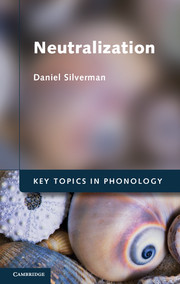19 - The power of Babelese
Published online by Cambridge University Press: 05 November 2012
Summary
We have now considered quite a few approaches to neutralization in phonology, all the while showing accreting arguments in favor of the overarching thesis that: (1) neutralizing alternations almost always maintain heterophony, and hence are usually function-neutral; (2) neutralizing alternations are function-negative only to the extent that they derive homophones; and most surprisingly, (3) neutralization is often function-positive, by serving as an aid to parsing. Employing the specialized terminology used herein, phonological rhyme may readily increase until encountering a counter-pressure inhibiting undue decreases in phonological reason, in the form of neutralization.
Our first tasks were to observe and describe (traditional) neutralization, the emphasis of Part I, Section A.
In Chapter 2 we characterized neutralization as a topological deformation of the amount of phonetic distinctiveness across the speech stream – in terms of spans, edges, and points – observing that the speech signal consists of time periods with more phonologically significant information (the expression of contrastive cues) interwoven with time periods of less phonologically significant information (the suspension or loss of contrastive cues).
In Chapter 3 we taxonomized the phenomenon by considering the contexts in which neutralizations – both oral and laryngeal – are more likely to be encountered: lexical non-prevocalic positions, non-initial positions, stressless contexts, and affixes. We also considered contexts in which neutralizations are less likely to be found: lexical prevocalic contexts, initial positions, stressed contexts, and roots.
- Type
- Chapter
- Information
- Neutralization , pp. 194 - 199Publisher: Cambridge University PressPrint publication year: 2012

